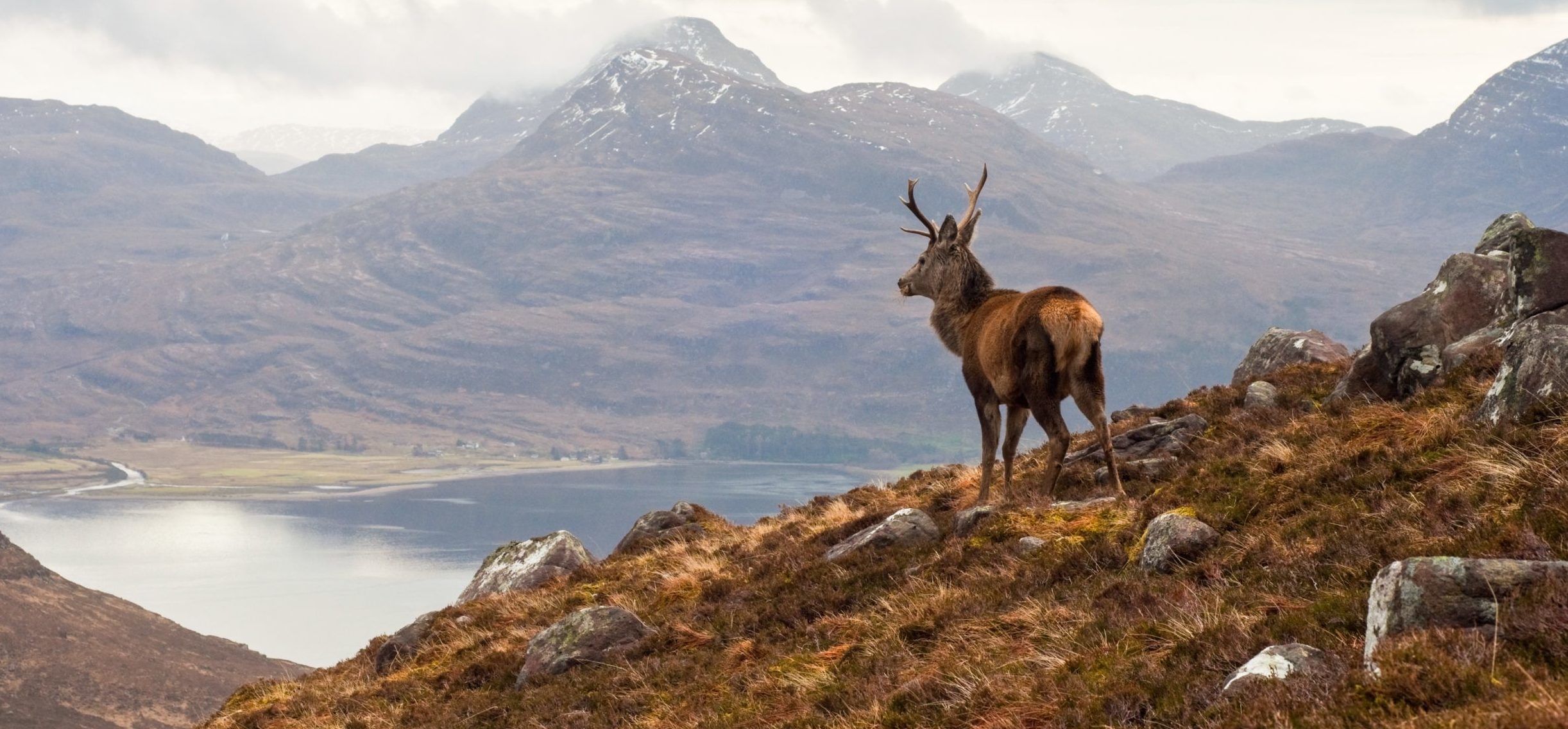Scotland’s Natural Environment Bill: What’s included?
The Scottish Government’s draft Natural Environment Bill was published on Wednesday 19th February. The Bill has 4 main parts:
- Part 1 says that the Scottish Government must set legally binding targets for nature restoration.
- Part 2 allows the Scottish Government to make and change laws relating to the Environmental Impact Assessments regime and the Habitats Regulations. This would replace a power that was lost as a result of the UK’s exit from the EU.
- Part 3 updates the aims of National Parks and makes changes to the way National Parks are run.
- Part 4 relates to the management of wild deer.
Legally binding Nature targets (Part 1)
Part 1 of the Bill amends the Nature Conservation (Scotland) Act 2004 to place a series of duties on the Scottish Ministers. The inclusion of statutory nature recovery targets will be binding on the government, similar to climate change targets. There is also provision for Environmental Standards Scotland (ESS) to undertake a quality assurance role. Secondary legislation is where the detail of the targets will be laid out in detail covering habitat condition and species status.
Environmental Impact Assessments regime and the Habitats Regulations Amendments (Part 2)
Part 2 of the Bill provides Scottish Ministers the authority to modify Environmental Impact Assessment (EIA) regulations and adjust Habitats Regulation Assessment (HRA) procedures. The aim being to ensure that the processes for assessing the potential environmental impacts of projects are effective and up-to-date with modern environmental challenges. HRA is used to assess potential impacts on designated habitats and species, ensuring that development or other activities do not negatively affect conservation sites such as Special Areas of Conservation (SACs).
National Parks (Part 3)
Changes are proposed to National Parks’ purposes, aiming to enhance biodiversity and manage access rights. The bill proposes broadening the purposes of National Parks to include stronger emphasis on supporting biodiversity, nature recovery, and addressing the climate crisis. This means that National Parks will have an increased responsibility to contribute to nature restoration and protection. The bill introduces a duty to ensure the effective implementation of National Park Plans, which outline the strategies for conservation, access, and sustainable management. The requirement for other public bodies operating within a National Park to have regard to the aims and Park Plans is a notable change. The bill grants the ability to issue fixed penalty notices for breaches of byelaws within National Parks. This enforcement mechanism will help to ensure that rules designed to protect wildlife and natural resources are followed.
Management of Wild Deer (Part 4)
Part 4 of the Bill relates to the management of wild deer. It includes provisions for controlling deer populations and addressing deer-related damage, along with measures to prevent harm and enforce regulations. Specifically, the Bill introduces amendments which allows NatureScot to use existing powers (e.g. control agreements and control schemes) to intervene where insufficient deer management is impeding projects or natural processes which serve to improve, or restore, the natural environment. Another change to deer legislation is the removal of the need for a licence to deal in venison to stimulate the small-scale local venison market and make local venison more affordable and accessible to local people.
CIEEM’s view of Scotland’s Biodiversity Framework
CIEEM welcomes the publication of the draft Natural Environment Bill and is supportive of legally binding nature recovery targets; we have inputted into the Scottish Environment LINK report Nature recovery targets: Statutory targets to drive the recovery of nature in Scotland. We also support measurable and attainable measures to get deer numbers down to environmentally sustainable levels.
Habitats Regulations have provided us with some of the most fundamental protections for nature for decades now, legally tested and found robust in helping to protect valuable habitats. Any change in adapting legal frameworks without clearly identifying the scope and extent of those powers causes concern that robust procedures and protections are safeguarded. Issues with Habitats Regulations often arise around misinterpretation, misapplication and lack of knowledge – and this includes regulators as much as developers.
The Natural Environment Bill goes alongside the Scottish Biodiversity Strategy and Delivery Plan 2024-2030 published in November 2024 and the Biodiversity Investment Plan. Together these strategies collectively represent Scotland’s overarching Biodiversity Framework and underpin the ambition to halt biodiversity loss and be nature positive by 2030, and to restore and regenerate biodiversity by 2045. You can read more about CIEEM’s reflections on the Biodiversity Strategy here.
With the Land Reform Bill currently making its way through Scottish Parliament, these two bills are the last remaining major pieces of legislation related to nature before the 2026 Scottish elections.
